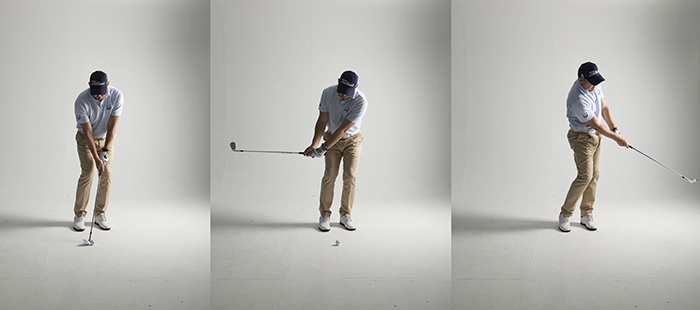We’ve all been there before – you’re at the range and your mate asks you for a little help with their swing. This series of tips helps you find the quick solutions to some of golf’s most common swing ailments. This month Grant Hepburn looks at some of the reasons behind your mate’s chipping problems.
In theory, chipping should be one of the easiest parts of the golf game. The swing is shorter and slower than a full swing and you’ve got a lofted club in your hands – what could possibly go wrong, right? Yet the reality is that a lot of people have trouble with their chipping precisely because it is a not a full-swing shot. In other words it requires feel, which is something that is hard to teach or learn. Even better players have trouble with shots around the green from time to time.
The good news is that, with some good basics and practise, you can learn to become a decent chipper – which will give you a chance to save par.
One of the most common causes of inconsistent chipping among ammies is that their weight gets stuck on their right foot at impact (for a right-handed golfer). When this happens, the low point of their swing is moved behind the ball and you will often see them catch ground behind ball (hitting it fat) or miss the ground and catch the top of the ball (hitting it thin).
I’ve identified some of the reasons why this may happen, but first, let’s look at the correct chipping swing.
Good swing sequence
The first thing you need to take note of is how my weight stays on my left side throughout the chipping swing. This is because, in an abbreviated swing, there is not enough time to shift my weight to my right side on my backswing and then transfer it back to my left at impact.
In the setup, note how I have a narrower-than-normal stance and my knees are leaning towards the target. This helps set my weight on my left side and keep it there throughout the swing. My chest is over my left knee and my head is in line with the ball, maybe even a little in front of it. My hands are slightly ahead of the ball.
In the backswing, there is a little bit of body turn, but the important thing is that my weight stays on my left – doesn’t transfer to right.
In the downswing, I need to transfer more of my weight to the left, which will ensures that I am mostly on left side at impact. This, together with my hands being slightly ahead of the ball, creates a downward strike with good rhythm, helping me to trap the ball nicely before the club hits the ground.
The setup
If your mate is struggling with fat or thin chip shots, the first thing to check is the setup. Check to see if his weight is on his right foot at address by hanging the club down from his sternum. If it hangs over the left knee, the weight distribution is good, but if it is somewhere near the right knee, he needs to shift his weight to the left.
The backswing
Another problem may be that he is shifting his weight to the right in the backswing as you can see in the images above. As I mentioned before, it is very difficult to get your weight back to the left in such an abbreviated swing, and in order to do so, I would need to hurry the shot, affecting my rhythm.
The followthrough
Because the swing is so soft, some players try to add extra loft to the club when chipping by leaning back through impact. They attempt to scoop the ball up, but all they are doing is getting themselves stuck on the right side – and more often than not they will end up with a fat or thin strike.
Don’t forget, as will all shots, you need to accelerate through the ball, even with a soft shot like a chip.
Down the line
Another common cause of chipping woes is that the player fails to open the club on the backswing. Because the clubface is closed, he now risks having the club dig into the turf and chunking the shot. An open clubface (with the toe up in the picture) will allow the bounce of the club to come into play – to act like a rudder and get the club to skim off the turf (as I’ve shown in the close-up images).








